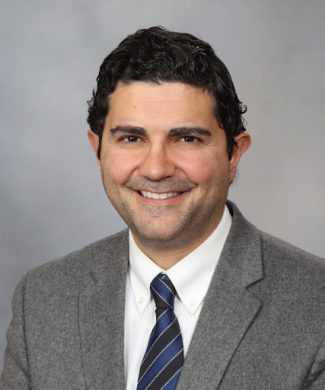The RECODE-DCM initiative calls upon the global community of healthcare professionals working with Degenerative Cervical Myelopathy (DCM), and individuals living with DCM, to come together to solve the Top 10 Research Priorities — 10 critical questions that are relevant to the whole community. In this blog focusing on Research Priority 6: Perioperative Rehabilitation, we will hear from Dr Mohamad Bydon, a neurosurgeon at Mayo Clinic.
We welcome comments from our community on our RECODE-DCM blog posts. Please share your perspectives by emailing recode@myelopathy.org — we’re listening!
—
Among patients with DCM, sleep impairment is a common clinical symptom that is reported by around 70% of patients at their initial evaluation. This sleep dysfunction is commonly due to neck pain, numbness, or tingling sensations (paraesthesias) and radiculopathy. The impact of sleep impairment on a patient’s overall health has been linked to cognitive decline, medical complications such as type II diabetes mellitus, cardiovascular disease, obesity, depression, and overall poor quality of life. As our population ages, the incidence of DCM is rising, yet patients often experience delays in diagnosis, putting them at risk for developing life-long disability and poor outcomes.
Surgical intervention is the current mainstay of treatment, however the role of surgery in improving these sleep-related symptoms in patients with DCM was yet to be explored. Thus, we conducted a study using the Cervical Spondylotic Myelopathy (another term for DCM) cohort of the national Quality Outcomes Database (QOD) to describe sleep-related outcomes after surgery and identify modifiable risk factors for persistent sleep dysfunction. Sleep dysfunction was evaluated using the Sleep Impairment component of the Neck Disability Index (NDI) questionnaire, which is an ordinal 6-level scale that evaluates the impact of neck pain on a patient’s quality of sleep where 0 represents no trouble sleeping and 5 represents a complete disturbance of sleep (loss of 5-7h) due to clinical symptoms.
In our study, we found that the majority (79.6%) had some degree of sleep dysfunction (NDI Sleep Impairment score: ≥1). Those with sleep impairment at baseline were more likely to be female, younger, and have a high school degree as the highest level of education. They were also significantly more likely to have clinical symptoms of radicular pain, paresthesia, neck pain and motor deficits, longer duration of their symptoms, and a lower quality of life at baseline. At 24 months, out of 743 patients, 541 (72.8%) reported an improvement in sleep. Patients with improvement were more likely to achieve clinically important differences (or MCID) for all patient reported outcomes and were more likely to report satisfaction with their surgery.
We were able to identify that smoking, osteoarthritis, radicular numbness, and neck pain (≥4 out of 10 on the Numerical Rating Scale) were independent risk factors for poor outcomes, and that lingering sleep disturbances at 2 years post-operatively are likely to be driven by neck pain and paresthesia of the extremities. These findings may be useful for both clinicians and patients in the pre-operative setting by providing reliable estimates of postoperative outcomes and adjusting patient expectations. Smoking cessation and optimizing osteoarthritis management could potentially improve the patient’s chances of experiencing an improvement after surgery and improve their overall quality of life.
About the Author

Dr Mohamad Bydon, M.D. is the Charles B. & Ann L. Johnson Professor of Neurosurgery. He is a neurosurgeon at Mayo Clinic specializing in complex spinal surgery and minimally invasive approaches to the spine.
He is also a Professor of Orthopedics and a Professor of Health Services Research. He is also Principal Investigator of the Mayo Clinic Neuro-Informatics Laboratory, focused on using data science to make surgeries safer and more effective for patients.

